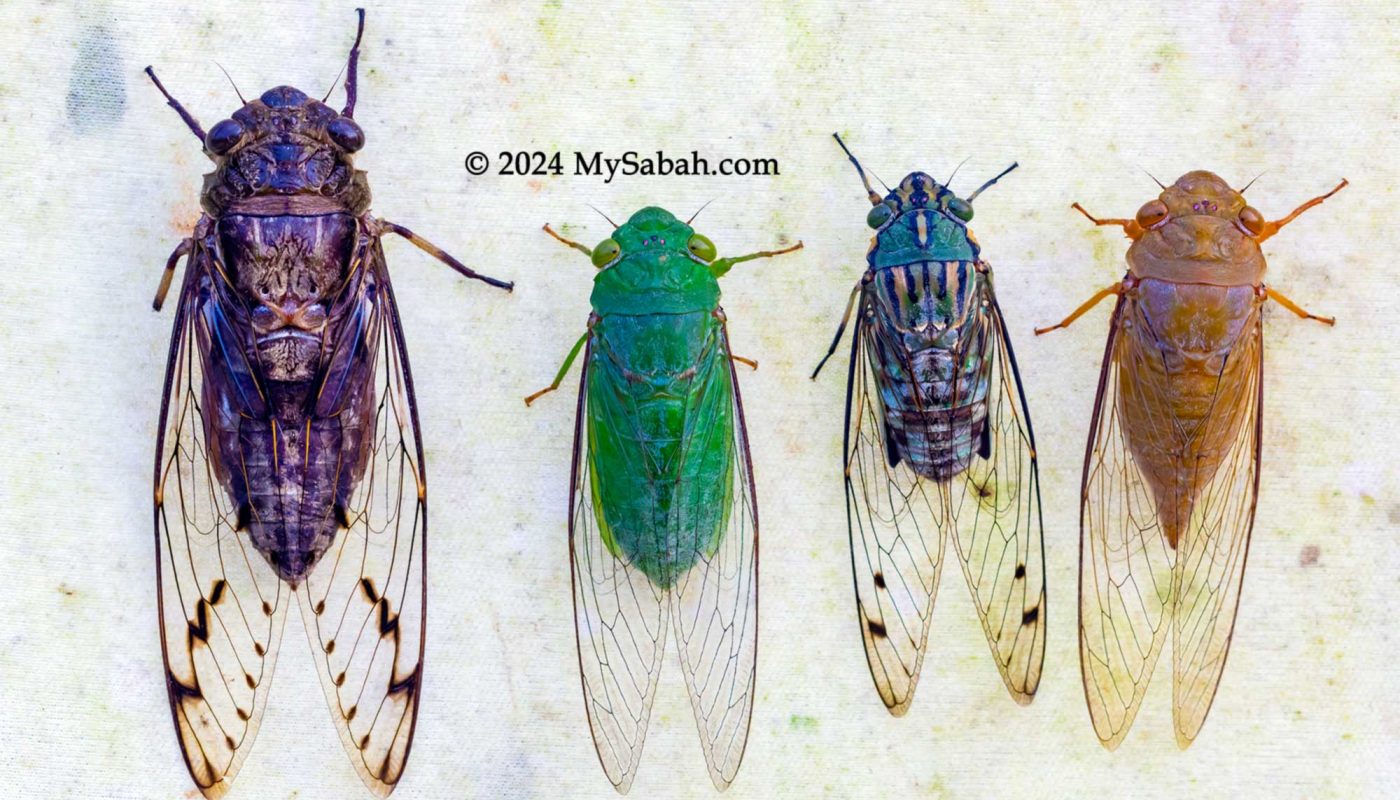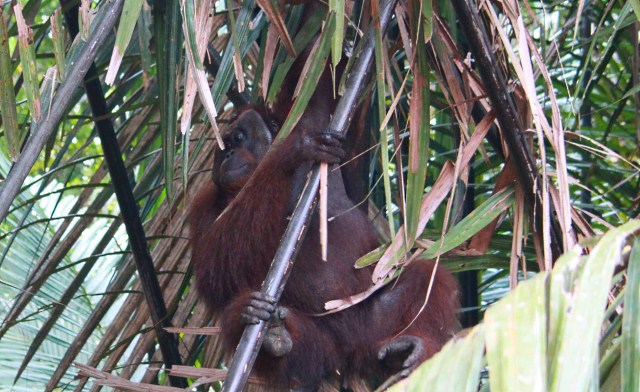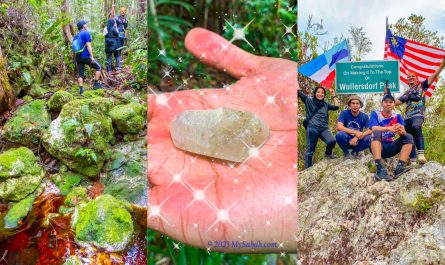There are around 3,000 species of cicadas worldwide, with approximately 150 species found in Malaysia alone. Sabah, in particular, has over 80 described cicada species. These fascinating creatures come in various sizes, spanning from 15 mm to 70 mm (0.6 to 2.76 in inches) in length. In the lush forests of Sabah, their melodious chorus often fills the air.
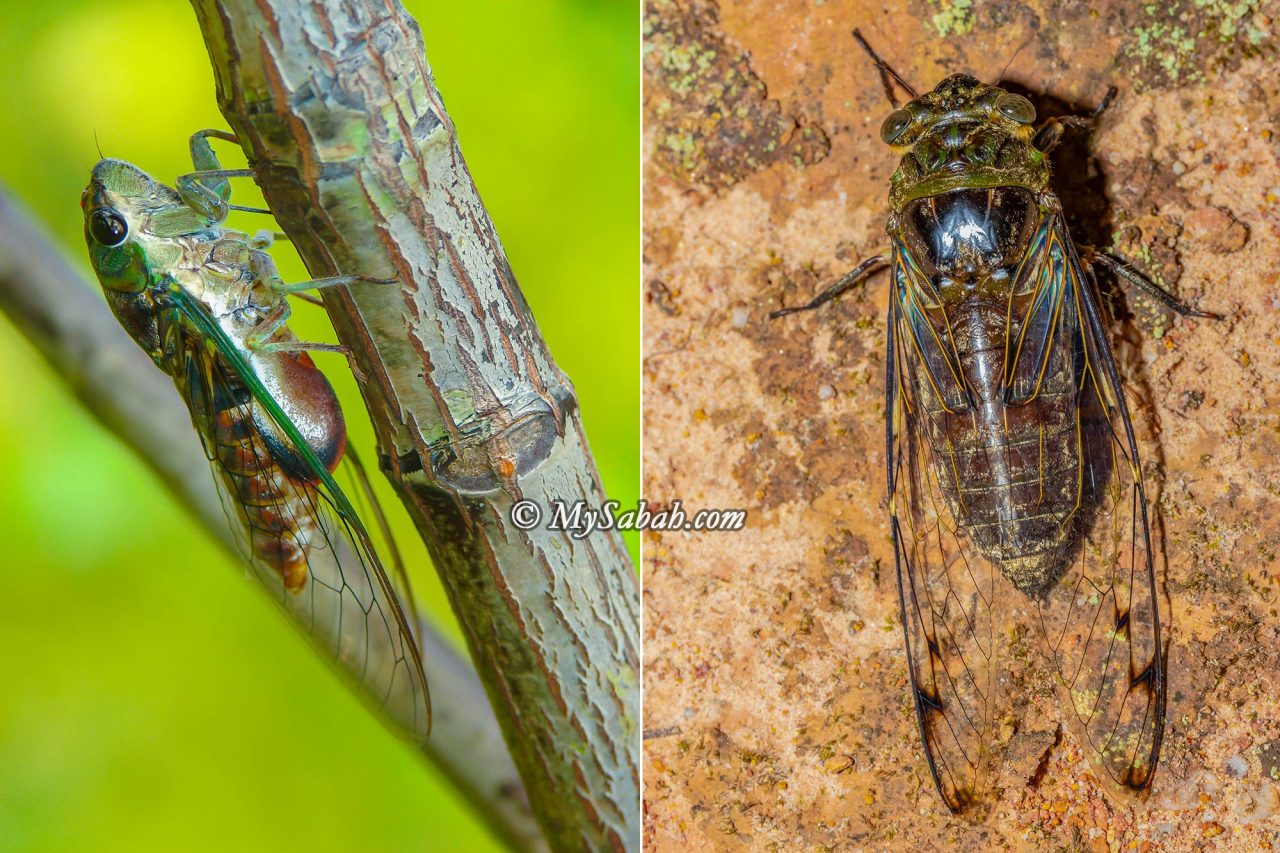
Did you know that only male cicadas can sing? Cicada can produce a sound exceeding 100 decibels, which is technically loud enough to cause permanent hearing loss if it sings right outside your ear. The giant cicada, Megapomponia merula, also known as the 6’o Clock Cicada, is the loudest cicada in Borneo (Click Here to hear its orchestra). In Peninsular Malaysia, its slightly larger cousin, Megapomponia imperatoria, is dubbed the 7 o’clock Cicada, as it gets darker later in this part of the country.

The swarming season for cicadas in Malaysia is typically from March to May. Cicadas spend their entire life cycle underground, emerging only in adulthood to breed. After laying their eggs in the soil, cicadas’ nymphs hatch and spend several years underground, burrowing as deep as 1 to 2.5 meters, where they feed on tree sap.
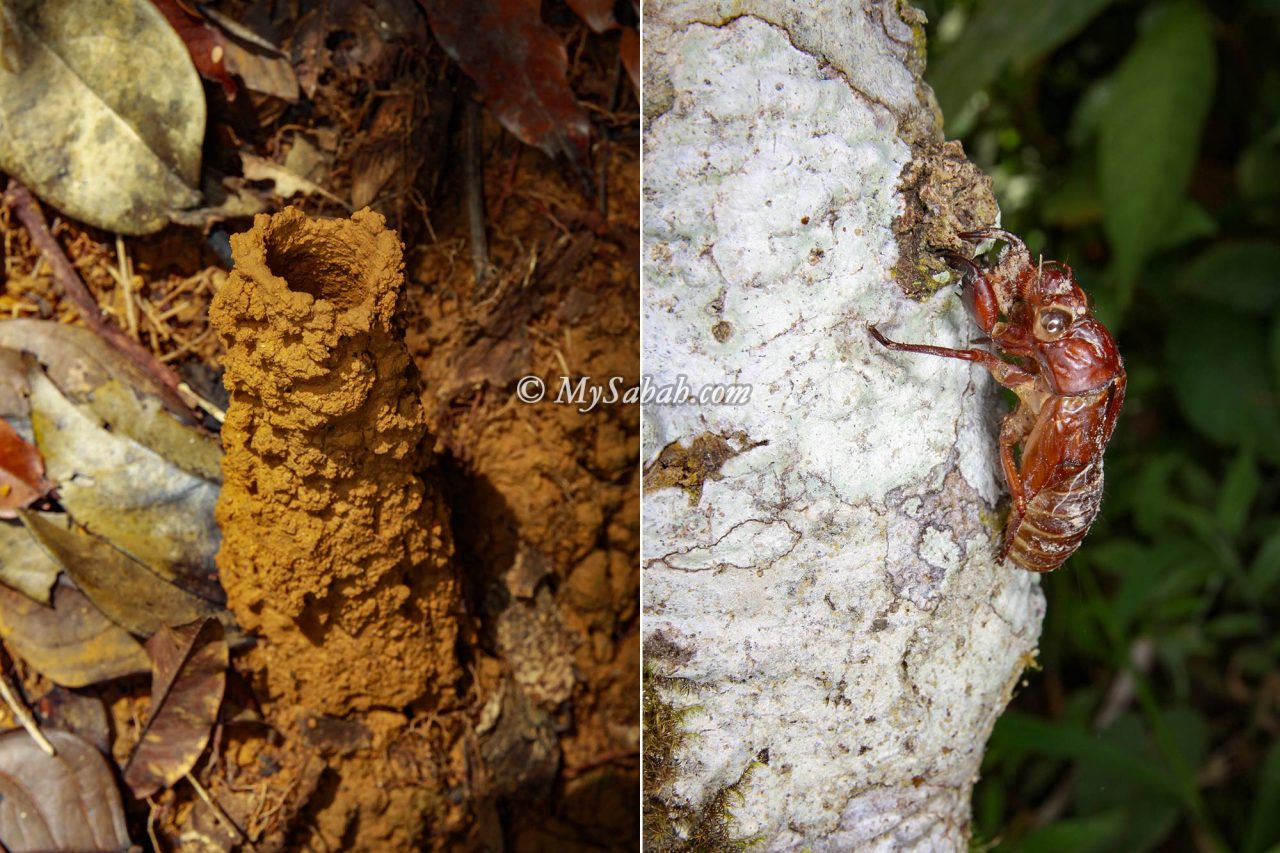
When they reach their final nymphal instar, they dig an exit tunnel to the surface and emerge. Once above ground, they ascend a nearby plant, shed their skin, and emerge as adults. In forested areas, you’ll often find many of these abandoned skins clinging to tree bark. Interestingly, these dry skins are utilized in certain Chinese medicines for their cooling effect.
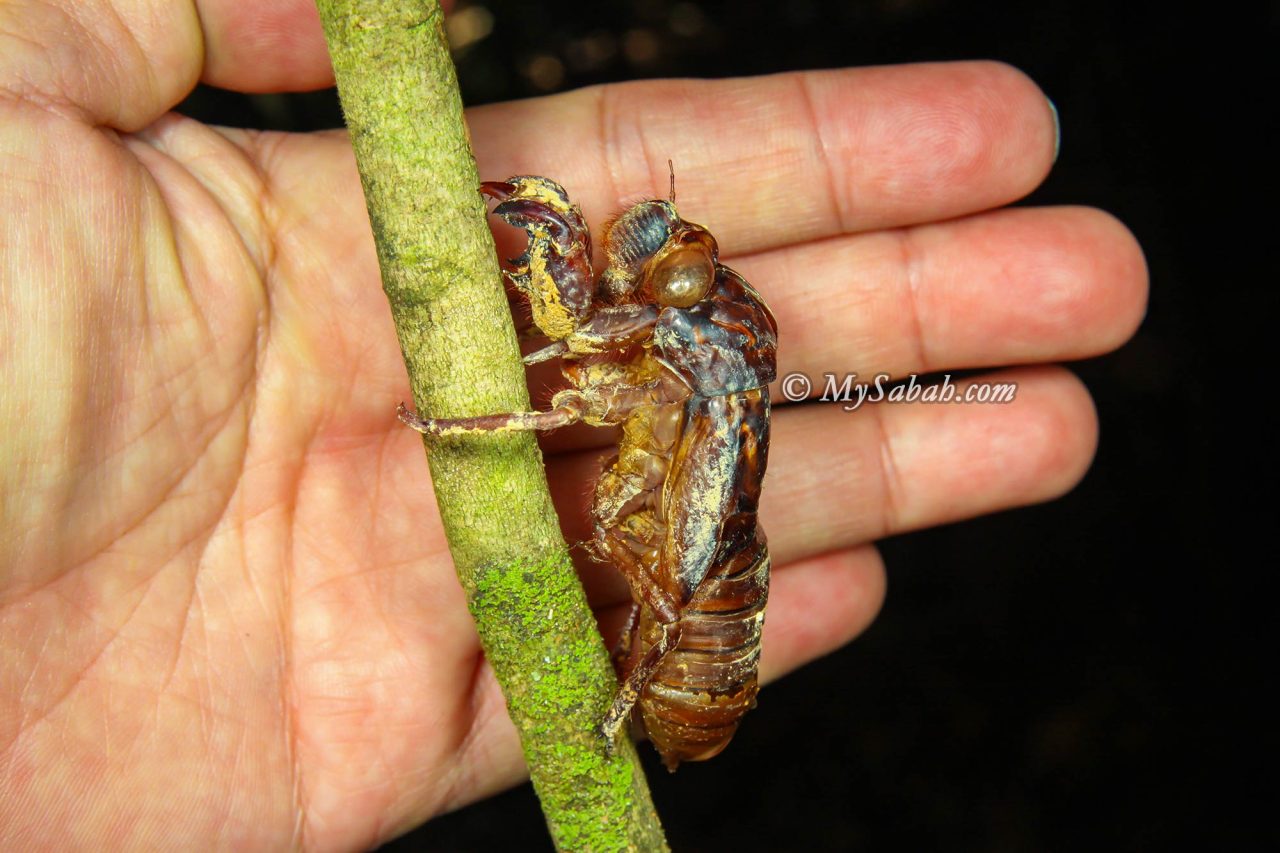
Local Chinese tradition holds a belief that when a person passes away, their spirit rides on a cicada (or moth or other insects) to visit the family on the seventh day to bid farewell before departing to the afterlife. As a result, it is taboo to harm any insect during this period.
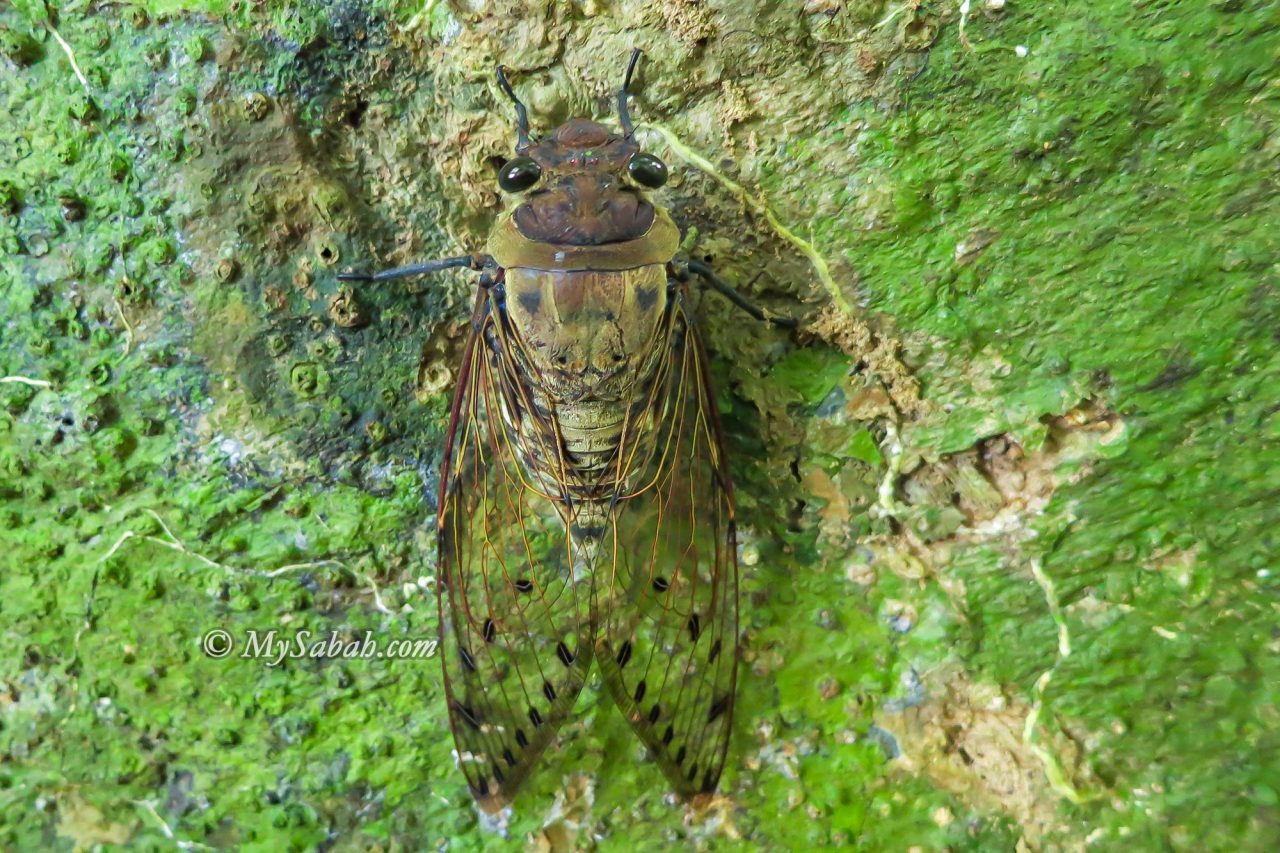
Throughout history, the cicada has symbolized resurrection, immortality, spiritual realization, and ecstasy. In ancient Greek and Roman cultures, they were considered sacred to Apollo and associated with the ecstatic singing of the Dionysian Bacchae and Maenads.
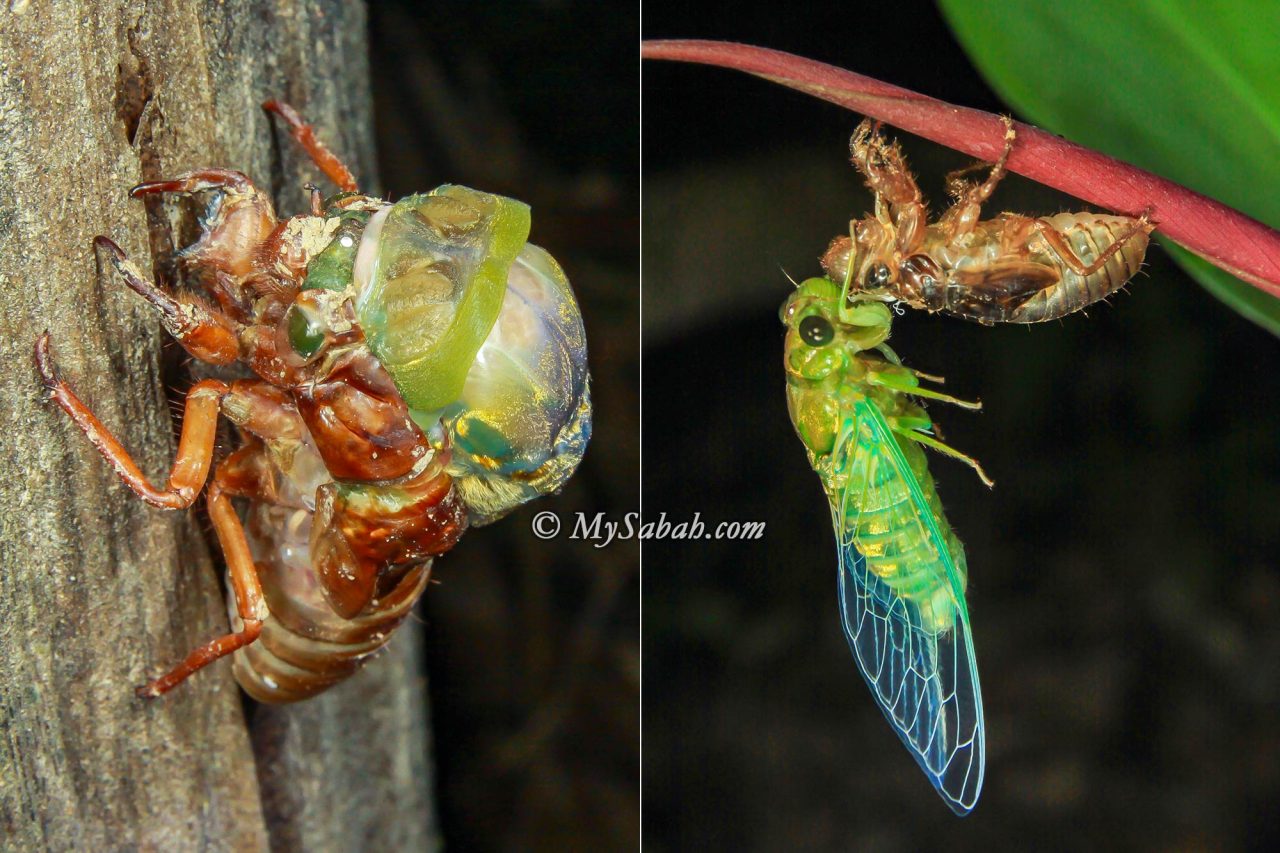
Some Sabah natives, particularly those from the interior, consume cicadas, especially the green varieties. These cicadas are typically roasted over a fire and have their hard exoskeleton removed before consumption. Alternatively, they may be stir-fried until they turn yellow. Some people even dig out the cicada nymph, which is said to have about 20 of them under the chimney. Interestingly, some refer to cicadas as the ‘Shrimps of the Land,’ suggesting they might be tasty.
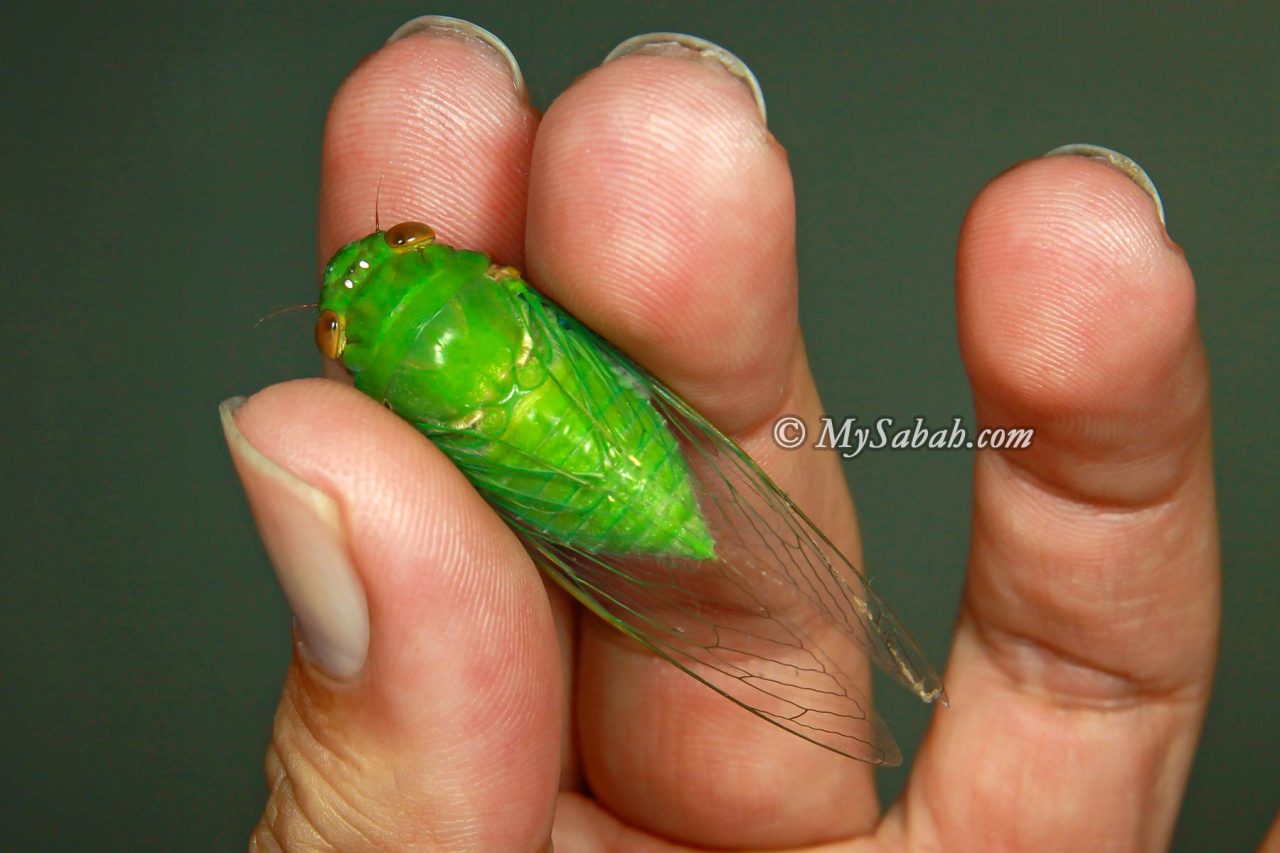
According to Dr. Azman Sulaiman, a researcher at the UKM Centre for Insect Systematics Entomology, cicadas are considered relatively clean compared to other insects, although some may carry parasites. In 2012, scientists discovered that cicada wings possess antimicrobial properties due to microstructures called nanopillars, which effectively shred various harmful bacteria.
Photos taken in Sabah, Malaysia Borneo
